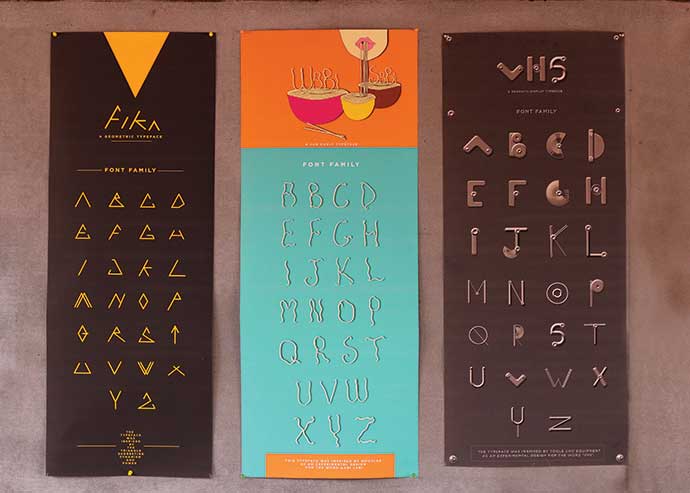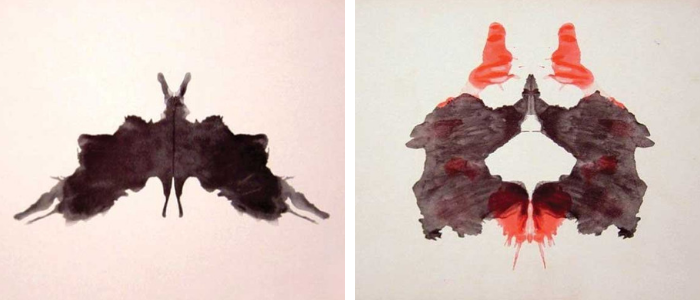“When you begin to ask those questions of what it means as a designer to be a culture maker, you ask harder questions about what kind of culture you’re creating.” – Dori Tunstall
Synchresis: An acronym formed by two words, synchronism and synthesis. It is the association of sound with image – where either is mutually exclusive. For example, the sound of a horse trotting can be replicated by clapping coconut halves onto bricks. And then in post-production, is synced to the image of an actual horse trotting. Foley artists do some amazing synchretic work. So essentially, synchresis is the creation of a relationship between two unrelated objects, which when presented in unison, makes absolute perfect sense and one can’t tell if the horse trotting on screen is actually sourcing coconut halves for the sound of its hooves on brick.
I sit in my office trying to think about all the things I can or want to write about. The not so distant sound of the power generator, not so gently thrums in my ears. I am surrounded by students toiling away at making great design and art and yet, there seems to be a void, a great anxious empty space that I feel. I cannot put my finger on the why. I have some ideas as to what may be causing it – one of which is everything that I see around me: All this visual culture that’s up on the walls, billboards, television. This immense amount of information that I have to process every day and then develop ways in which my students can interpret and improve it.
Words gain meaning over time. They transcend the meaning that was associated with them as language evolves and become thicker, deeper. Accumulating ideas, thoughts, and philosophies over time, words grow into something more meaningful, something with more thought embedded in them than previously imagined.
Imagine a seed as it is sown in the ground. With nurturing over time, the seed grows into a little plant that eventually branches out and becomes a full-fledged tree. More branches, more leaves and then eventually some fruit. The fruit bears seeds and thus, the cycle starts all over again. Words form networks of associated meanings. Synonyms, antonyms, adjectives and way more grammar than we care to remember. But at the end, it all starts from a word. The Bible claims that word to be “light”. The Quran says it was “kunn”. Being and becoming all at once. Synergistic symbiosis.
As far back as I can remember, I’ve always been interested in words. On how languages behave and eventually, how those (we) involved in the process of communication can best understand and apply the intricacies of words. I decided, that I will conduct an experiment with my students to help me understand it better.
EXPERIMENTING SYNERGY
To this end, I developed an exercise for my students. Fourth-year design grads, en route to their theses. I asked them to identify three words they preferably don’t use much and have no apparent association with. I did not disclose what was to be done once the words were selected. Some students came up with just three words and some brought more than what was required. Over individual sessions, we selected just the three they felt the strongest about. Once we had selected the words, I asked them to study the formation of language, from its history through to the etymology of the words they chose. They still did not know what the idea of language had to do with design. You may be wondering the same…
Once my students had some idea of some of the intricacies of the construction of words and language, I asked them to completely forget the established meaning of their chosen words and associate a new meaning to them. For example, if someone chose “Spaghetti”, they were to ignore what spaghetti meant in the real world and make it mean “the curl of lips as one smiles”. It’s easier to remember meanings than forget them. It was difficult for me also, I had to believe in their stories. In whatever angle or reason they wanted to give, I questioned them. They had to have believable stories. Create new worlds or maybe find them, and lay it all down in words.
They were asked to develop their own ways of testing their words on peer groups. To conduct surveys and ask people what they thought of their new meanings. Some of them developed unique methods for finding out what people thought of the new meanings. One of them conducted Rorschach tests and then used the data from to it build her words. Another decided that she had to make illustrations that would help people understand the color theory embedded in her idea. That was the most surprising part of the exercise, they literally designed their own research methodologies and then applied them to great success. They used that data to make their stories and words stronger, with more believability and meaning.
And then, there was light. Ok, maybe not that much light. Perhaps sparks. Exploring all sorts of design systems. One created a digital hyper-reality in which he illustrated himself sitting amidst the overload of digital media. Another wanted to grow vines on under construction columns. Another student wanted to project the new words as extensions of himself.
A student created a typeface called VHS that had VHS parts in it. One created an interactive cube – divisions of which, could be rotated independently to make new shapes. Sort of like a Rubik’s cube. One student created an old school record cover sourcing the psychedelic era and on it, an entire narrative philosophy. Another wrote an existentialist play – first the script and then branded it. So many great ideas that I can’t do justice to all. The focus of what they could achieve through words was only defined by their imagination.
But they had to write. And in doing so, refine their ideas and breathe life into them. They were compelled to develop an insight into their words with reason. Then translate that insight into an image. Without the restriction of medium or even discipline.
It was difficult to talk about, let alone critique. When they pitched their ideas, we had to listen for cues that would lead them to better articulation. In critiques, we also had to choose what to look at; was it their story that had to take precedence over the image or was it the image that was all? Then there were those that managed to create that fine balance between idea and image. And then, we as instructors had to form just the right words to deliver our judgment of their work. It was an experience that I would go through again and again just to see what words form over the years and how each new batch learns to re-imagine them.

GERMINATION
These students will be absorbed by the industry very soon. By the time they graduate, they will have developed their independent working styles. Each will have developed a unique context-based approach to the practice and understanding of design. Given, they have little professional exposure, but imagine them 15 years from now.
There are two ways to imagine their future. In order for the design to establish itself as an active participant of popular culture, we must create thinkers. Whatever the mediums of this industry are, we seem to be missing independent thinkers and makers of design. The objective of an industry is to encourage and develop exploration – to inculcate research. We must allow, as an entire machine with all its parts – as a collective – to develop an insight into the time we are in. And create thinkers that start developing research-based studies of independent and associated design phenomena.
The approach to design cannot be restricted to advertising. Or perhaps only to its consumerist overtones. It is not ineptitude that holds back progression – it is never that. Clearly, these students have amazing talent. They can develop insights that perhaps we cannot, at this point in our lives. Or maybe, their insight is so full of inherent brightness, of ideas and words that it would forever remain fresh. Which, for the most part when they move into the industry, will be shadowed by tasks that do not perhaps encourage independent thinking. There’s always that middleman. There’s always the client. Fair considerations all. But with the advent of this networked world, designers don’t need to be dependent on commissions – we can generate our own bodies of work.
Having graduated, some of these students choose to make their own projects. Things they do outside of their jobs. Some of these ideas even come to fruition. But it takes time, it takes time and great care to cultivate a visual culture of words with meaning.
I would love to see where the industry of design is in the coming years. Would it have a voice? Would it speak? Would it write? What would it be? I wonder what these extremely talented people will do with their lives. How would their work evolve?
It is difficult to approximate all that. If allowed to do unimaginable things, they would create wonders. Wonders that could create a new visual thinker. One that not only observes the world around them but has the potential to observe design independently and in context. And more than anything is equipped to create work that expands the scope of design – not limit it.
This all may seem overly optimistic and perhaps even embellished. But it is, that. We, after all, must speak. As a discipline, we must develop an independent voice that creates and leaves echoes. Echoes that others can listen to and be drawn towards. We must form collectives and to say the least, confer. All we need to speak… is words.
RORSCHACH TEST

ABOUT THE WRITER
Omair Faizullah is a designer and communications specialist. Currently, he heads the Dept. of Visual Communication Design at the School of Visual Art & Design, Beaconhouse National University. Omair can be reached at whomair@gmail.com or his Instagram handle @whomair
